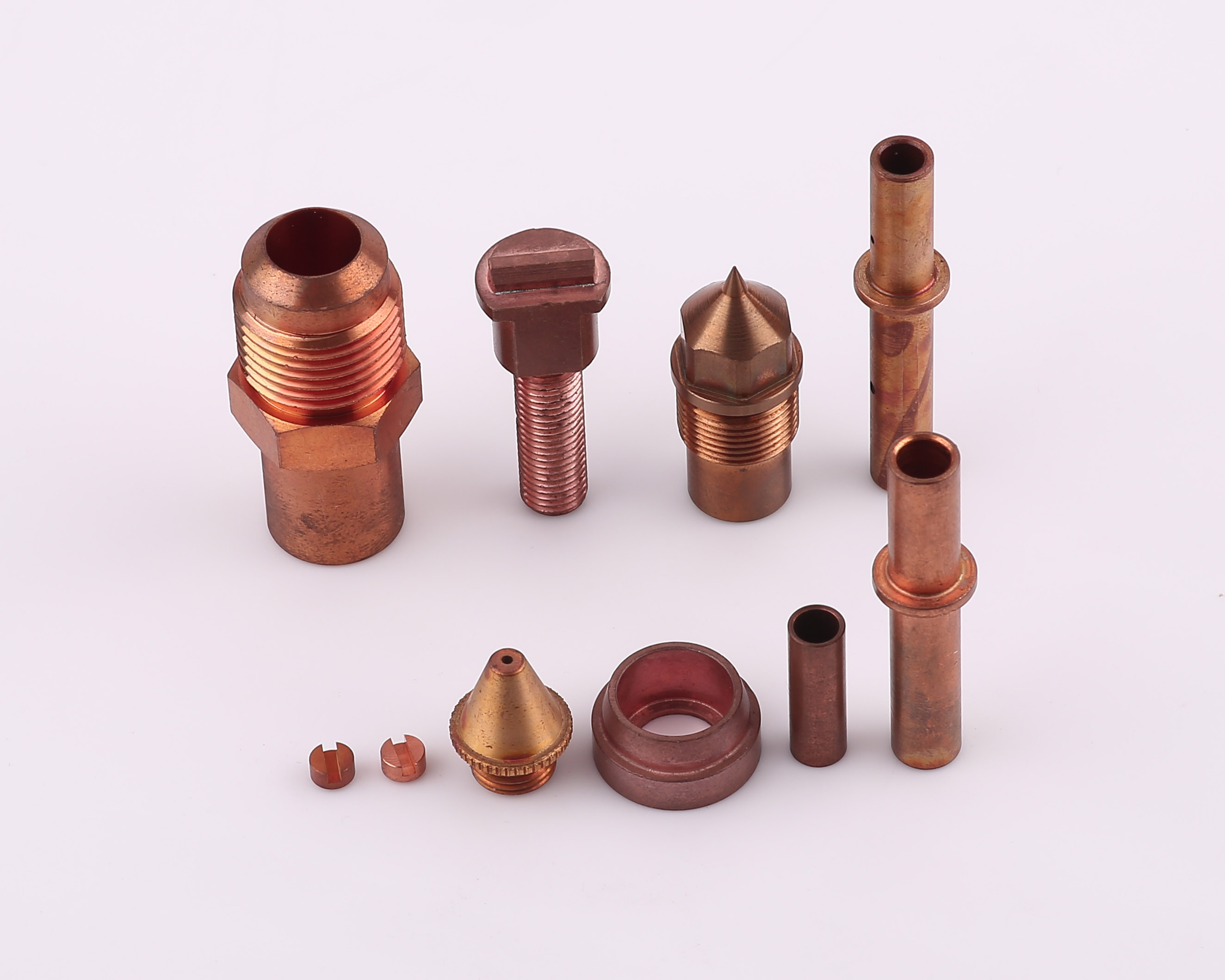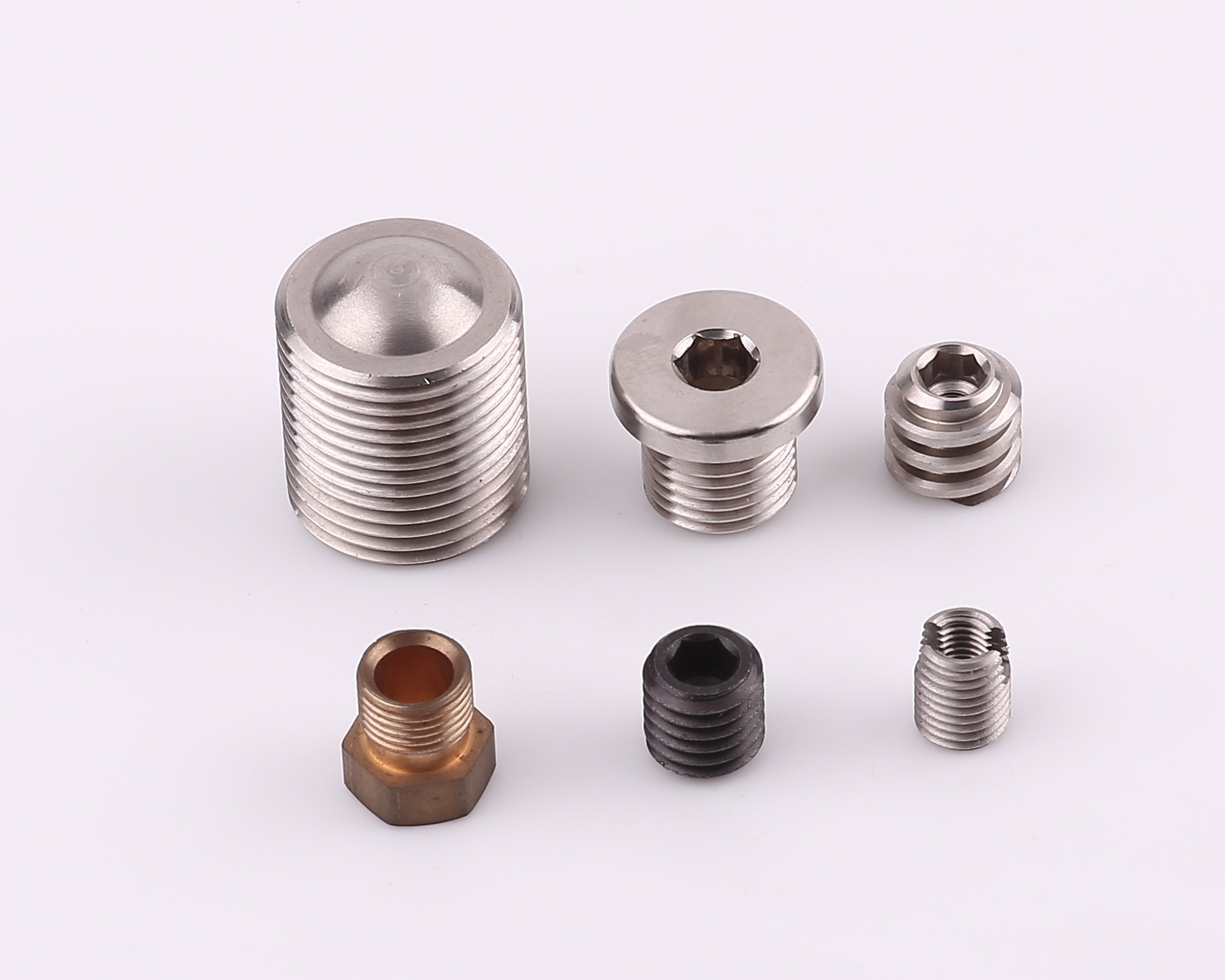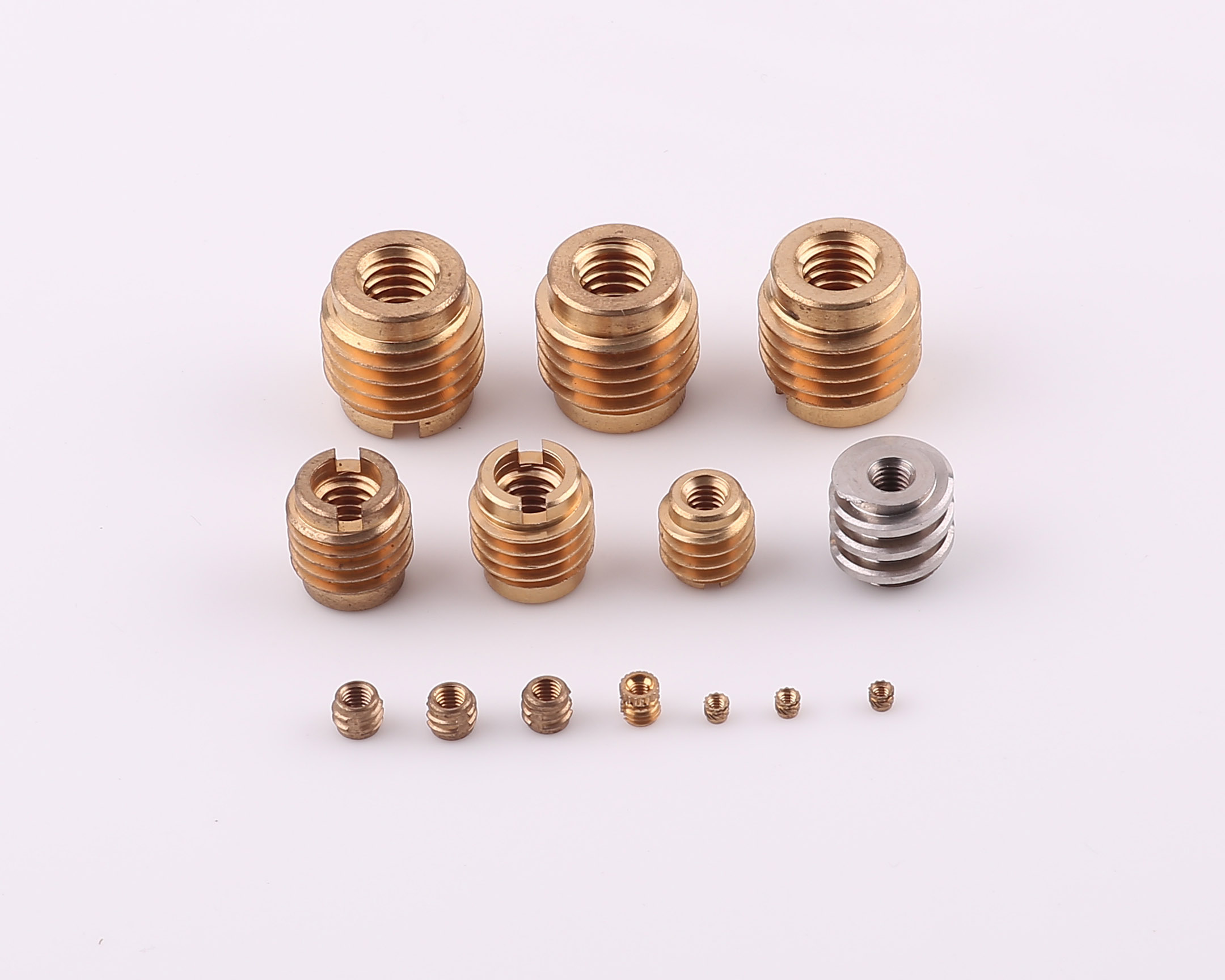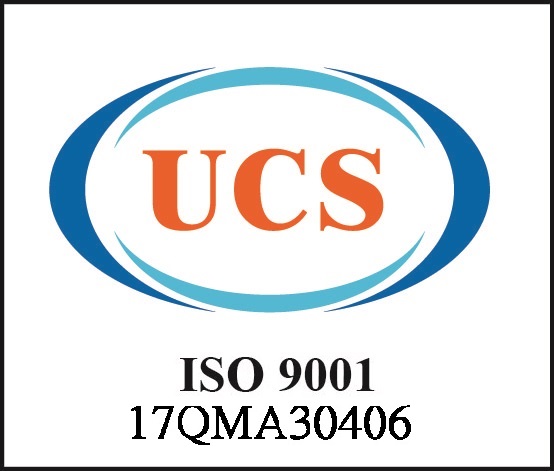
CNC加工
熱熔螺母,銅間隔柱,銅母柱,壓花銅鉚釘,空氣螺絲,車床插銷,銅定位銷



熱熔螺母,銅間隔柱,銅母柱,壓花銅鉚釘,空氣螺絲,車床插銷,銅定位銷
標題:CNC加工技術:現代製造的革命性工藝
引言
CNC加工技術(Computer Numerical Control)是一項現代製造業中的重要工藝,它革命性地改變了如何製造和加工零件以及生產產品。本文將深入探討CNC加工技術的原理、應用領域、優勢以及未來發展趨勢。
第一章:CNC加工技術的概述
1.1 CNC加工的基本原理
CNC加工是一種自動化的製造過程,其中計算機數控系統控制機械設備,如車床、銑床、鑄造機等,實現高精度的切削和加工操作。這一過程是基於預先編程的指令,控制刀具的運動、進給速度、切削深度和其他加工參數,以製造精確的零件。
1.2 CNC加工的優勢
CNC加工技術具有多重優勢,包括:
高精密度:CNC系統能夠實現微細和高精密的加工,確保零件的尺寸和品質達到高標準。
自動化:CNC機器可以連續運行,無需人工干預,提高了生產效率。
可重復性:CNC加工過程的重復性非常高,確保每個零件的一致性。
複雜幾何形狀:CNC機器可以處理各種複雜的幾何形狀,包括曲線、孔洞和內外輪廓。
定制化:CNC加工允許根據客戶的需求和設計要求製造定制的零件。
第二章:CNC加工的應用領域
2.1 汽車工業
汽車製造商廣泛使用CNC加工技術,以製造引擎零件、懸掛系統、制動系統等關鍵零件。這有助於提高汽車的性能和安全性。
2.2 航空航天工業
在航空航天工業中,CNC加工用於製造飛機結構、發動機零件、航空電子設備等,確保飛行器的性能和可靠性。
2.3 醫療設備
醫療設備製造商使用CNC加工技術來製造高精密的醫療器械零件,如人工假肢、手術儀器、植入式醫療設備等。
2.4 能源行業
能源行業依賴CNC加工技術來製造石油和天然氣設備、風力和太陽能設備、火力發電設備等,以確保能源生產的高效運行。
第三章:未來發展趨勢
3.1 智能製造
未來,CNC加工技術將更加智能化,使用數據分析和人工智能技術來優化加工過程,實現更高效的生產和更精確的控制。
3.2 材料創新
新的材料和合金將推動CNC加工技術的發展,使其能夠應對更具挑戰性的應用,如高溫、高壓、高強度的環境。
3.3 環境可持續性
環保和可持續性將成為CNC加工技術的重要關注點。減少能源消耗、材料浪費和廢棄物將是未來發展的方向。
結論
CNC加工技術已經改變了現代製造業的格局,為各個行業提供了高精密度、高效率和定制化的解決方案。隨著智能製造和環保意識的增強,CNC加工技術將繼續發展,為製造業的未來帶來更多的創新和可能性。它將繼續在汽車、航空航天、醫療設備、能源等領域中發揮關鍵作用,推動科技進步和產業升級。
第四章:CNC加工的工作原理
4.1 CNC控制系統
CNC加工的核心是CNC控制系統,它由計算機、控制器和軟件組成。操作員使用電腦軟件來編程CNC機器,定義切削路徑、刀具運動和加工參數。這些程序被轉換成機器能夠理解的指令,並由控制器傳遞給CNC機器。控制系統負責協調機床上的運動,確保刀具在正確的位置和速度下進行切削。
4.2 刀具和工件
在CNC加工過程中,刀具是至關重要的。不同形狀和材料的刀具用於不同類型的加工,例如銑削、鑽孔、車削等。工件是待加工的材料,可以是金屬、塑料、陶瓷等。操作員必須選擇合適的刀具和工件,並確保它們固定在機床上以進行加工。
第五章:CNC加工的應用領域
5.1 航空航天工業
航空航天工業是CNC加工的主要應用領域之一。它用於製造飛機結構、發動機零件、航空電子設備等。CNC加工確保了飛行器的高精度和安全性。
5.2 醫療設備
CNC加工技術在醫療設備製造中扮演關鍵角色,用於生產高精密的醫療器械零件,如人工假肢、手術儀器、植入式醫療設備等。這些產品需要高度可靠的製造過程。
5.3 汽車工業
汽車製造商廣泛使用CNC加工技術,以製造引擎零件、懸掛系統、制動系統等關鍵零件。這有助於提高汽車的性能和安全性。
5.4 能源行業
能源行業依賴CNC加工技術來製造石油和天然氣設備、風力和太陽能設備、火力發電設備等,以確保能源生產的高效運行。
第六章:未來發展趨勢
6.1 智能製造
未來,CNC加工技術將更加智能化,使用數據分析和人工智能技術來優化加工過程,實現更高效的生產和更精確的控制。
6.2 材料創新
新的材料和合金將推動CNC加工技術的發展,使其能夠應對更具挑戰性的應用,如高溫、高壓、高強度的環境。
6.3 環境可持續性
環保和可持續性將成為CNC加工技術的重要關注點。減少能源消耗、材料浪費和廢棄物將是未來發展的方向。
結論
CNC加工技術是現代製造業的關鍵工藝,它通過計算機數控系統實現高精密度、高效率和定制化的生產。未來,隨著智能製造和環保意識的增強,CNC加工技術將繼續發展,為製造業的未來帶來更多的創新和可能性。它將在各個領域中持續發揮關鍵作用,推動科技進步和產業升級,並滿足不斷變化的市場需求。
第七章:CNC加工的挑戰與應對
7.1 技術培訓和專業人才
CNC加工技術需要熟練的操作員和工程師來運營和維護設備,因此培訓和吸引專業人才將是一個持續的挑戰。製造業需要投資於培訓和教育,以確保技術的傳承和持續發展。
7.2 數據安全和隱私
隨著CNC加工系統變得更加智能化,數據安全和隱私成為一個重要的考慮因素。製造商必須制定安全措施,以保護數據不被未經授權的訪問或竊取。
7.3 環境可持續性
CNC加工過程產生的廢棄物和能源消耗是一個環境可持續性的挑戰。製造商需要尋找更環保的加工方法和材料,以減少對環境的影響。
7.4 市場競爭
全球製造業市場競爭激烈,CNC加工技術已經成為許多國家和企業的主要競爭優勢。製造商需要不斷提高自己的技術水平,以保持競爭力。
結論
CNC加工技術是現代製造業的一個關鍵工藝,它具有廣泛的應用領域,並在各個行業中發揮著重要作用。儘管面臨一些挑戰,如技術培訓、數據安全、環境可持續性和市場競爭,但CNC加工技術的未來前景仍然非常光明。隨著科技的不斷發展和創新,CNC加工技術將繼續推動製造業的進步,並為我們的社會和經濟帶來更多的價值和機遇。
CNC加工技術(Computer Numerical Control)是一項現代製造業中的關鍵技術,它利用計算機控制機床或機器來完成各種加工操作。這種技術的出現和發展,革命性地改變了製造業的方式,為高精度、高效率、定制化和複雜零件的製造提供了可能性。
CNC加工的基本原理是將電腦編程用於控制機械運動,以實現精確的切削、鑽孔、磨削、車削、銑削等加工操作。以下是CNC加工技術的一些關鍵元素和特點:
數控系統: CNC加工的核心是計算機數控系統。操作員使用電腦軟件來編寫加工程序,指定刀具的運動路徑、切削速度、進給率、切削深度等加工參數。這些程序被轉換成機器能夠理解的指令,以控制機床上的運動。
刀具和工件: 刀具是用於切削和加工的工具,而工件是待加工的材料。不同的刀具和工件組合可實現各種不同的加工操作。刀具的選擇取決於加工材料和所需的加工操作。
高精密度: CNC加工具有極高的精密度,能夠實現微細的切削和高精度的加工。這使得它適用於需要高精度零件的行業,如航空航天、醫療設備和高端工程。
自動化: CNC機器可以連續運行,無需人工干預,提高了生產效率。操作員只需監視運行狀態並進行必要的設置和調整。
可重復性: CNC加工過程的重復性非常高,確保每個零件都具有一致的品質和尺寸。這對於大規模生產和批量生產非常重要。
定制化: CNC加工技術允許根據客戶的需求和設計要求製造定制的零件。這使得它適用於各種不同的行業和應用。
CNC加工技術在多個領域中得到廣泛應用,包括但不限於:
航空航天工業: 用於製造飛機零件、發動機零件、飛行控制系統等。
汽車工業: 用於製造引擎零件、懸掛系統、制動系統等。
醫療設備: 用於製造高精密的醫療器械零件,如人工假肢、手術儀器等。
能源行業: 用於製造石油和天然氣設備、風力和太陽能設備、火力發電設備等。
未來,CNC加工技術將繼續發展,更多的智能化和自動化特點將被引入,以提高生產效率和質量控制。此外,環保和可持續性也將成為關注的焦點,以減少能源消耗和廢棄物產生。CNC加工技術將持續推動製造業的發展,並為創新和生產提供更多可能性。
Title: CNC Machining Technology: A Revolutionary Process for Modern Manufacturing
introduction
CNC machining technology (Computer Numerical Control) is an important process in modern manufacturing. It has revolutionized how to manufacture and process parts and produce products. This article will deeply explore the principles, application fields, advantages and future development trends of CNC machining technology.
Chapter 1: Overview of CNC machining technology
1.1 Basic principles of CNC machining
CNC machining is an automated manufacturing process in which a computer numerical control system controls mechanical equipment, such as lathes, milling machines, casting machines, etc., to achieve high-precision cutting and machining operations. The process is based on pre-programmed instructions that control the tool's movement, feed rate, depth of cut and other machining parameters to create precise parts.
1.2 Advantages of CNC machining
CNC machining technology has multiple advantages, including:
High precision: CNC systems can achieve micro and high-precision machining, ensuring that the size and quality of parts meet high standards.
Automation: CNC machines can run continuously without manual intervention, improving production efficiency.
Repeatability: The CNC machining process is very repeatable, ensuring consistency in every part.
Complex geometries: CNC machines can handle a variety of complex geometries, including curves, holes, and internal and external contours.
Customization: CNC machining allows customized parts to be manufactured according to the customer's needs and design requirements.
Chapter 2: Application fields of CNC machining
2.1 Automobile industry
Automakers use CNC machining technology extensively to manufacture key components such as engine parts, suspension systems, and braking systems. This helps improve the performance and safety of your car.
2.2 Aerospace industry
In the aerospace industry, CNC machining is used to manufacture aircraft structures, engine parts, avionics, etc. to ensure the performance and reliability of aircraft.
2.3 Medical equipment
Medical device manufacturers use CNC machining technology to manufacture high-precision medical device parts, such as artificial prostheses, surgical instruments, implantable medical devices, etc.
2.4 Energy industry
The energy industry relies on CNC machining technology to manufacture oil and gas equipment, wind and solar equipment, thermal power generation equipment, etc. to ensure efficient operation of energy production.
Chapter 3: Future Development Trends
3.1 Intelligent manufacturing
In the future, CNC processing technology will be more intelligent, using data analysis and artificial intelligence technology to optimize the processing process and achieve more efficient production and more precise control.
3.2 Material innovation
New materials and alloys will promote the development of CNC machining technology, enabling it to cope with more challenging applications, such as high temperature, high pressure, and high-intensity environments.
3.3 Environmental sustainability
Environmental protection and sustainability will become important concerns for CNC machining technology. Reducing energy consumption, material waste and waste will be the direction of future development.
in conclusion
CNC machining technology has changed the landscape of modern manufacturing, providing high precision, high efficiency and customized solutions for various industries. As awareness of smart manufacturing and environmental protection increases, CNC machining technology will continue to develop, bringing more innovation and possibilities to the future of manufacturing. It will continue to play a key role in automobiles, aerospace, medical equipment, energy and other fields, promoting technological progress and industrial upgrading.
Chapter 4: Working Principle of CNC Machining
4.1 CNC control system
The core of CNC machining is the CNC control system, which consists of computers, controllers and software. Operators use computer software to program CNC machines, defining cutting paths, tool movements and machining parameters. These programs are converted into instructions that the machine can understand and passed to the CNC machine by the controller. The control system is responsible for coordinating the movement of the machine tool to ensure that the tool is cutting at the correct position and speed.
4.2 Tools and workpieces
In the CNC machining process, cutting tools are crucial. Tools of different shapes and materials are used for different types of processing, such as milling, drilling, turning, etc. The workpiece is the material to be processed, which can be metal, plastic, ceramic, etc. The operator must select the appropriate tools and workpieces and ensure they are secured to the machine tool for machining.
Chapter 5: Application areas of CNC machining
5.1 Aerospace industry
The aerospace industry is one of the main application areas of CNC machining. It is used in the manufacture of aircraft structures, engine parts, avionics, etc. CNC machining ensures high precision and safety of the aircraft.
5.2 Medical equipment
CNC machining technology plays a key role in medical equipment manufacturing and is used to produce high-precision medical device parts, such as artificial prostheses, surgical instruments, implantable medical equipment, etc. These products require highly reliable manufacturing processes.
5.3 Automobile industry
Automakers use CNC machining technology extensively to manufacture key components such as engine parts, suspension systems, and braking systems. This helps improve the performance and safety of your car.
5.4 Energy industry
The energy industry relies on CNC machining technology to manufacture oil and gas equipment, wind and solar equipment, thermal power generation equipment, etc. to ensure efficient operation of energy production.
Chapter Six: Future Development Trends
6.1 Intelligent Manufacturing
In the future, CNC processing technology will be more intelligent, using data analysis and artificial intelligence technology to optimize the processing process and achieve more efficient production and more precise control.
6.2 Material innovation
New materials and alloys will promote the development of CNC machining technology, enabling it to cope with more challenging applications, such as high temperature, high pressure, and high-intensity environments.
6.3 Environmental sustainability
Environmental protection and sustainability will become important concerns for CNC machining technology. Reducing energy consumption, material waste and waste will be the direction of future development.
in conclusion
CNC machining technology is a key process in modern manufacturing. It achieves high-precision, high-efficiency and customized production through computer numerical control systems. In the future, as smart manufacturing and environmental awareness increase, CNC processing technology will continue to develop, bringing more innovation and possibilities to the future of manufacturing. It will continue to play a key role in various fields, promote technological progress and industrial upgrading, and meet changing market needs.
Chapter 7: Challenges and Responses to CNC Machining
7.1 Technical training and professional talents
CNC machining technology requires skilled operators and engineers to operate and maintain the equipment, so training and attracting professional talent will be an ongoing challenge. The manufacturing industry needs to invest in training and education to ensure the inheritance and continued development of technology.
7.2 Data security and privacy
As CNC machining systems become more intelligent, data security and privacy become an important consideration. Manufacturers must have security measures in place to protect data from unauthorized access or theft.
7.3 Environmental sustainability
The waste and energy consumption generated by CNC machining processes is an environmental sustainability challenge. Manufacturers need to find greener processing methods and materials to reduce environmental impact.
7.4 Market competition
Competition in the global manufacturing market is fierce, and CNC processing technology has become the main competitive advantage of many countries and companies. Manufacturers need to constantly improve their technology to stay competitive.
in conclusion
CNC machining technology is a key process in modern manufacturing. It has a wide range of applications and plays an important role in various industries. Despite some challenges such as technical training, data security, environmental sustainability and market competition, the future prospects of CNC machining technology are still very bright. With the continuous development and innovation of science and technology, CNC processing technology will continue to promote the progress of manufacturing and bring more value and opportunities to our society and economy.
CNC processing technology (Computer Numerical Control) is a key technology in modern manufacturing, which uses computers to control machine tools or machines to complete various processing operations. The emergence and development of this technology has revolutionized the way of manufacturing, providing the possibility for the manufacturing of high-precision, high-efficiency, customized and complex parts.
The basic principle of CNC machining is to use computer programming to control mechanical motion to achieve precise cutting, drilling, grinding, turning, milling and other processing operations. The following are some of the key elements and characteristics of CNC machining technology:
CNC system: The core of CNC machining is the computer numerical control system. Operators use computer software to write machining programs and specify machining parameters such as the tool's motion path, cutting speed, feed rate, and depth of cut. These programs are converted into instructions that the machine can understand to control the movement of the machine tool.
Tools and Workpieces: Tools are the tools used for cutting and machining, while the workpiece is the material to be machined. Different tool and workpiece combinations enable a variety of different machining operations. The choice of tool depends on the material being processed and the machining operations required.
High precision: CNC machining has extremely high precision and can achieve fine cutting and high-precision processing. This makes it suitable for industries that require high-precision parts, such as aerospace, medical equipment and high-end engineering.
Automation: CNC machines can run continuously without manual intervention, improving production efficiency. The operator only needs to monitor the operating status and make necessary settings and adjustments.
Repeatability: The CNC machining process is extremely repeatable, ensuring that every part is of consistent quality and size. This is very important for mass production and batch production.
Customization: CNC machining technology allows customized parts to be manufactured according to customer needs and design requirements. This makes it suitable for a variety of different industries and applications.
CNC machining technology is widely used in many fields, including but not limited to:
Aerospace industry: Used to manufacture aircraft parts, engine parts, flight control systems, etc.
Automotive industry: Used to manufacture engine parts, suspension systems, braking systems, etc.
Medical equipment: Used to manufacture high-precision medical equipment parts, such as artificial prostheses, surgical instruments, etc.
Energy industry: Used in the manufacture of oil and gas equipment, wind and solar equipment, thermal power generation equipment, etc.
In the future, CNC machining technology will continue to develop, and more intelligent and automated features will be introduced to improve production efficiency and quality control. In addition, environmental protection and sustainability will also be a focus to reduce energy consumption and waste generation. CNC machining technology will continue to promote the development of manufacturing and provide more possibilities for innovation and production.


